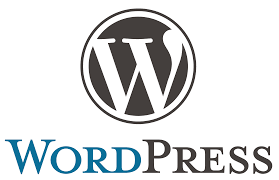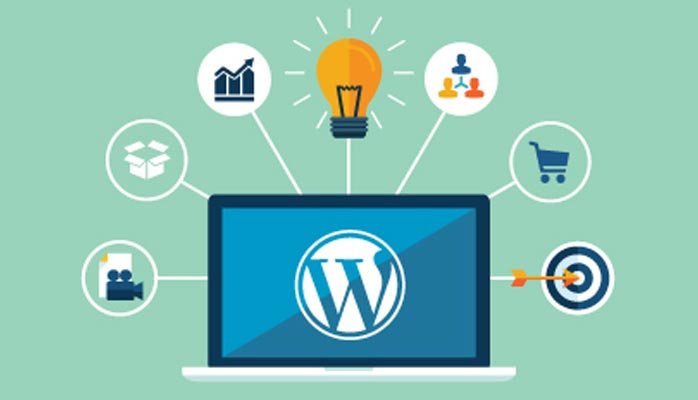WordPress is one of the most popular content management systems, used by millions of websites around the world. Whether you’re just starting out or an experienced user, there are always ways to improve your WordPress site. In this article, we’ll share 10 essential WordPress tips to help you get the most out of your site. These tips will help you optimize your site, improve its performance and security, and make it easier for your visitors to find what they’re looking for. Let’s get started.
Tip #1: Optimize Your Website for Mobile Devices
Optimizing your WordPress website for mobile devices is a must in today’s digital world. With more and more people accessing the internet through mobile devices, it is important that your website is optimized to meet the needs of mobile users. Here are some tips to help you get started:
1. Optimize Your Website for Mobile Devices: Make sure your website is optimized for mobile devices. This means ensuring that your website is responsive and can adapt to different screen sizes. Also, make sure that your website’s loading time is fast on mobile devices, as users tend to abandon websites that take too long to load.
2. Utilize Plugins: Utilize plugins like Jetpack, WP Touch, and WP Mobile Detector to help optimize your website’s mobile experience. These plugins will help make sure that your website looks and functions well on mobile devices.
3. Optimize Images: Optimize your images to reduce their file size and make sure they are optimized for mobile devices. This will help speed up your website’s loading time on mobile devices.
By following these tips, you can ensure that your WordPress website is optimized for mobile devices and provide users with the best experience possible.
Tip #2: Use a Quality WordPress Theme
Using a quality WordPress theme for your website is an important step in creating a successful online presence. A quality WordPress theme will help ensure that your website is easy to navigate, looks professional, and is optimized for search engines. It will also help you create a unique look and feel for your website that reflects your brand.
When selecting a WordPress theme, it’s important to look for one that is reliable, secure, and well-coded. It should also be responsive, meaning that it will look great on both desktop and mobile devices. Additionally, look for themes with plenty of customization options, so you can easily customize the look of your website to match your brand.
Finally, make sure that the WordPress theme you choose is regularly updated by the developer. This will ensure that it is compatible with the latest version of WordPress and that any security issues or bugs are addressed quickly.
By taking the time to choose a quality WordPress theme, you can ensure that your website looks professional and is optimized for search engines. This will help you increase your website’s visibility online and ultimately help you achieve your business goals.
Tip #3: Make Use of Plugins
Using plugins is one of the best ways to customize your WordPress website. Plugins are small pieces of software that extend the functionality of WordPress, allowing you to do more with your site than would otherwise be possible. They are great for adding features, such as contact forms, ecommerce, social media integration, and more.
Plugins also help with SEO, performance, security, and much more. They make it easy to customize a WordPress website, without having to write code. With a wide variety of plugins available, you can easily find one that suits your needs.
Before installing a plugin, however, make sure you do your research. Read reviews, check compatibility, and make sure the plugin is up-to-date and maintained. It’s also important to keep track of the plugins you have installed, as having too many can slow down your website.
When used correctly, plugins can be incredibly helpful and make a big difference in the overall look and feel of your WordPress website.
Tip #4: Increase Security with SSL and HTTPS
WordPress is one of the most popular content management systems, and it is important to ensure that your site is secure. Tip 4 to increase security on your WordPress site is to add SSL and HTTPS. You can easily add SSL and HTTPS to your WordPress site by using a plug-in. This will secure all of the data that is transmitted between your website and visitors. It will also give visitors the assurance that their data is secure, which can help improve trust in your website. Additionally, some search engines may even give you a boost in search rankings if you have SSL and HTTPS enabled. So don’t forget to add SSL and HTTPS to your WordPress site to ensure maximum security.
Tip #5: Use SEO to Boost Your Site
WordPress is a powerful tool for businesses and individuals looking to increase their online presence. However, without proper search engine optimization (SEO) techniques, your WordPress site won’t be seen by potential customers.
Luckily, there are plenty of ways to optimize your WordPress site for search engines. Tip 5 is to use SEO to boost your site.
When it comes to SEO, there are two main elements to consider: on-page and off-page. On-page SEO refers to the content and structure of your website, while off-page SEO refers to the links that point to your website from other websites.
To start, make sure that your WordPress site is optimized for on-page SEO. This includes optimizing your titles and meta descriptions, as well as writing content that is relevant to your target audience. Additionally, make sure that your site is properly structured and free of errors.
Once your WordPress site is optimized for on-page SEO, you can begin focusing on off-page SEO. This includes building backlinks from other websites, as well as using social media to promote your content. Additionally, you can use Google Adwords and other paid search engine marketing methods.
By utilizing both on-page and off-page SEO, you can ensure that your WordPress site receives the visibility it deserves. So, make sure to take advantage of SEO to boost your WordPress site’s visibility and help your business reach its goals.
Tip #6: Optimize Your Site Speed
Optimizing your site speed is one of the most important aspects of maintaining a website. If your website is too slow, users will quickly become frustrated and leave. Luckily, there are several ways to improve your website speed, especially if you are using WordPress.
First, you should always try to use the latest version of WordPress. This will ensure that you have the most up to date features and bug fixes. Additionally, you should try to reduce the number of plugins you are using. Each plugin can add to the total page load time, so you should only use the ones that are absolutely necessary.
You should also check the size of your images. Large images can take a long time to load, so you should always try to keep them as small as possible. Additionally, you can use a caching plugin to store commonly used elements of your website and to reduce the number of resources that need to be loaded every time a page is requested.
Finally, you should also consider using a content delivery network (CDN). A CDN will store copies of your website data in multiple locations across the world and deliver them to users depending on their geographic location. This can significantly improve your website loading times.
By following these tips, you can make sure that your WordPress website is running as quickly as possible.
Tip #7: Utilize Google Analytics
If you are running a WordPress website, then you should definitely be taking advantage of Google Analytics. Google Analytics is a powerful tool that can help you understand your website’s performance and track different metrics to help you make informed decisions about your website. With Google Analytics, you can track the number of visitors to your website, where your visitors are coming from, what pages they are viewing, and much more. With this data, you can better understand your target audience, optimize your website for conversions, and measure the success of your marketing campaigns. So, make sure to take advantage of this free resource and start utilizing Google Analytics today.
Tip #8: Improve Your Content with Multimedia
Multimedia content can be a great way to spice up your WordPress blog and draw in more readers. Images, videos, audio clips, and other types of media can be a great way to call attention to your blog and keep readers engaged. Whether you’re looking to create a tutorial video, a podcast, or simply add some images to your posts, there are a few things you should know to make sure your multimedia content is optimized for WordPress.
First, make sure your media files are in the correct format for WordPress. WordPress supports a variety of file types, including .jpg, .png, .gif, .mp3, .mp4, and .ogg. Make sure you’re using the correct file type for the media you’re uploading.
Next, make sure your media files are optimized for speed. Large files can slow down your blog, so be sure to optimize your images and videos for the web. You can also use a plugin like Smush or EWWW Image Optimizer to further reduce the size of your images.
Finally, make sure you’re using the right plugins and tools to display your multimedia content on your blog. For example, if you want to embed a YouTube video on your blog, you can use the YouTube Embed plugin to easily add the video to your post.
Using multimedia content in your WordPress blog can be a great way to draw in more readers and keep them engaged. Be sure to follow these tips to ensure your multimedia content is optimized for WordPress.
Tip #9: Implement A/B Testing
WordPress is a powerful tool for creating and managing websites. One way to make your WordPress site even more successful is to implement AB testing. AB testing is a method of testing two versions of a website or web page to determine which one performs better. This can be used to optimize the user experience and increase conversions. With WordPress, you can easily add AB testing to your site with plugins and themes. Once you have the plugin or theme installed, you can create different versions of a page or post and measure the performance of each. This will allow you to make changes to the page or post in order to improve the user experience and increase conversions. AB testing is a powerful tool that can help you get the most out of your WordPress site.
Tip #10: Stay Up to Date on Best Practices
Staying up to date on the best practices for WordPress is essential for any website owner. WordPress is constantly evolving, and it’s important to keep up with the changes in order to ensure that your website is secure, user-friendly, and performing well. Here are some tips on how to stay up to date on the best practices for WordPress:
1. Follow WordPress-related blogs: There are many WordPress-related blogs that offer helpful advice and tutorials on the latest updates and features. Following these blogs can help you stay up to date on the latest WordPress best practices.
2. Join WordPress forums: There are many forums dedicated to WordPress that can offer useful insights on the latest updates and best practices. Participating in these forums can help you stay up to date on the latest WordPress trends.
3. Attend WordPress conferences and events: Attending conferences and events dedicated to WordPress can be a great way to learn about the latest best practices and updates.
4. Take online courses: Taking online courses related to WordPress can be a great way to stay up to date on the latest best practices and features.
5. Use the WordPress Codex: The WordPress Codex is a great resource for learning about the latest best practices and features. It’s a good idea to regularly check in with the Codex to stay up to date on the latest WordPress information.
By following these tips, you can stay up to date on the best practices for WordPress and ensure that your website is running smoothly and securely.
In conclusion, WordPress is a powerful, versatile, and user-friendly platform that can be used to create and manage a website. By taking advantage of the 10 essential WordPress tips outlined in this article, you can optimize your site and make it easier to navigate, secure, and more appealing to visitors. From choosing a reliable hosting provider to selecting an SEO-friendly theme, these tips can help you to improve your website and get the most out of your WordPress experience.












